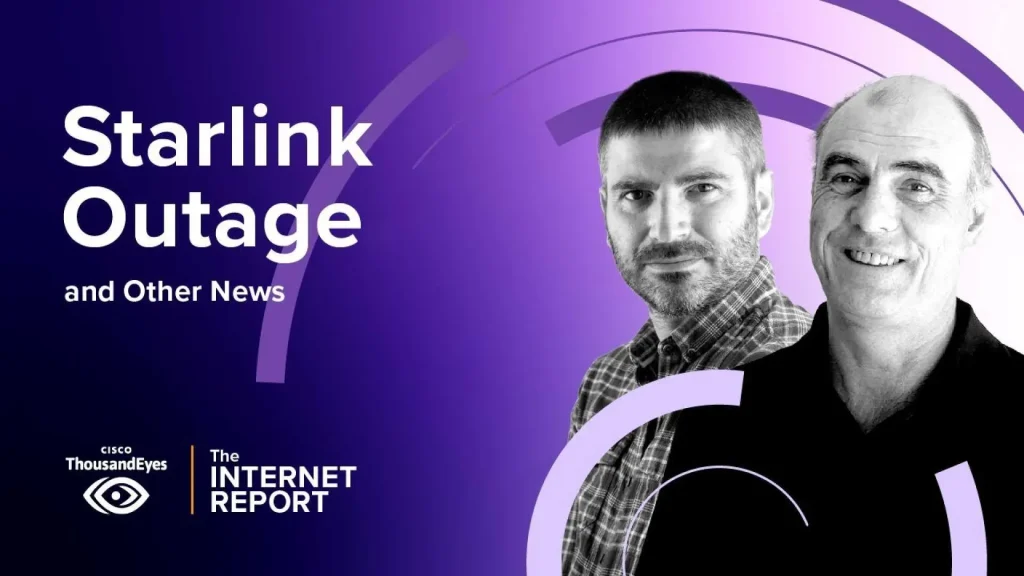On Thursday, the Starlink outage created significant disruption for users of Elon Musk’s satellite internet service, leaving many without connectivity for hours. As reports flooded in, over 60,000 service interruptions were tallied on Downdetector, highlighting the extent of the network outage. Musk, via his platform X, reassured customers that service would be restored quickly, but many were left questioning their trust in Starlink’s reliability. The incident coincided with the launch of T-Mobile’s new satellite service, which, despite its claims of seamless operation, sparked discussions around Musk’s Starlink issues and broader satellite internet problems. As satellite internet gains traction, the incident raises important concerns about the stability of such services, particularly as users become increasingly reliant on them for remote connectivity.
Recent connectivity challenges experienced by users of Elon Musk’s satellite-based internet service have sparked conversations about its operational stability. The service, operated by SpaceX, faced considerable downtime that left thousands disconnected, raising serious reliability issues among its customer base. As the demand for satellite connections grows, especially with innovations like T-Mobile’s satellite service making headlines, scrutiny over the performance of these technologies intensifies. This situation underlines the larger conversation around service inconsistencies in the satellite realm, emphasizing the need for reliable internet access in even the most remote areas. In an age where connectivity is essential, understanding the ramifications of such outages is critical for consumers and industry stakeholders alike.
Understanding Musk’s Starlink Outage
Elon Musk’s Starlink has been a game-changer in satellite internet access; however, the recent hours-long outage highlights the vulnerabilities in its service. On Thursday, the network suffered interruptions that peaked with over 60,000 reports from users on Downdetector, a reliable platform for tracking such incidents. The outage coincided with the launch of T-Mobile’s satellite service, raising eyebrows about the reliability of Starlink amidst its purportedly expanding capabilities.
Musk’s response to the outage was swift, acknowledging the issue via his social media platform, X, with a promise of speedy recovery. SpaceX’s Vice President of Starlink Engineering later confirmed that the service was mostly restored after approximately 2.5 hours. However, this incident has sparked ongoing discussions about the potential reliability concerns associated with satellite internet services, especially as they play a crucial role in connectivity for remote users.
T-Mobile Satellite Service: Impact on Starlink
The launch of T-Mobile’s satellite service, powered by Starlink, was touted as a major advancement in connectivity, particularly for users in areas lacking traditional mobile infrastructure. The ability to maintain phone connections in remote locations positions this service as a complementary solution to existing offerings. Nonetheless, the simultaneous emergence of outages raises questions about the sustainability of such rapid expansions, especially with increased usage often leading to performance declines.
As T-Mobile claims their service operates without any network disruptions, Starlink customers are left concerned about how such developments may impact their overall experience with satellite internet. If the infrastructure supporting both services is stretched too thin, users may face increased latency or service interruptions, undermining trust in the reliability of satellite internet solutions during critical times.
Recent outages, such as the one that occurred following the T-Mobile launch, emphasize this precarious balance and call for improved resilience in satellite internet technology. Users in rural areas increasingly depend on these services for daily communication, and any failure to deliver consistent performance could lead to broader dissatisfaction.
SpaceX’s Response to Outages and Reliability Issues
In light of the recent Starlink outage, it is crucial for SpaceX to transparently communicate with its user base concerning reliability issues. The acknowledgment by Musk and subsequent updates provided by SpaceX’s executives reveal an understanding of the public’s concern regarding network reliability. However, these statements must be backed by tangible improvements in service to reassure customers who may be contemplating their options due to these interruptions.
Reliability in satellite internet is paramount, especially as more users turn to services like Starlink for both personal and professional connectivity. Moving forward, SpaceX must invest in its infrastructure and ensure users are informed about necessary upgrades or possible service disruptions. Providing a clear framework for real-time updates during outages could improve user trust and strengthen loyalty among existing customers.
The Future of Satellite Internet Amid Challenges
The satellite internet landscape is evolving rapidly, particularly with the introduction of services like T-Mobile’s direct-to-cell offering powered by Starlink. Yet, as seen during the recent outage, the growth of such technologies brings forth several challenges that must be addressed proactively. As customers increasingly rely on satellite internet for their connectivity, any disruptions, such as network outages, can severely affect their overall experience.
To ensure the future of satellite internet is bright and resilient, companies like SpaceX must focus on improving infrastructure to withstand increased demand. Strategies could include expanding ground stations, optimizing satellite constellations, and improving system redundancies. By proactively addressing these concerns, SpaceX can solidify its position in the satellite internet market, attracting more users while maintaining the trust of current customers who have experienced the impact of such outages.
User Experience During Starlink Outages
For many users, experiencing a Starlink outage can be incredibly frustrating, particularly when they depend on the service for critical tasks. The recent incident serves as a reminder of the potential issues that can arise with satellite internet, prompting users to consider the implications for their day-to-day connectivity. During times of instability, users not only miss out on essential communication but may also encounter disruptions to work or educational activities.
The community feedback gathered during and after the outage highlights the importance of robust user communication strategies during these events. SpaceX’s outreach and updates, although timely, need to be coupled with actionable solutions to minimize the impact of future outages. As service providers innovate to keep pace with growing demand, user experience must remain at the forefront of their operational strategies.
Comparing Starlink to Traditional Internet Providers
When evaluating the overall reliability of Starlink against traditional internet providers, several key distinctions emerge. Traditional ISPs often rely on wires and cables that may experience localized disruptions, while Starlink users face challenges related to satellite connection stability — a critical consideration revealed during the recent outage. As consumers consider the shift to satellite internet, they must weigh the pros and cons of each model in terms of stability and performance.
While Starlink offers unique coverage capabilities that can benefit users in rural or hard-to-reach areas, it can also suffer from intermittent outages like the one recently experienced, which may not be as common with established ISPs. However, the rapid pace of technological advancements in satellite internet indicates that businesses must invest in improvements to match or surpass traditional connectivity to maintain user interests.
The Role of Technology in Satellite Internet Reliability
Technological advancements play a pivotal role in the success and reliability of satellite internet services like Starlink. With the recent outage, many users are prompted to evaluate the resilience of current technology against growing demands. As the landscape shifts towards higher expectations for connectivity, service providers need to prioritize upgrading their satellite and ground infrastructure to handle increased user traffic effectively.
Simultaneously, companies should invest in research and development to enhance satellite technology, optimizing algorithms that manage connectivity and service interruptions. By incorporating cutting-edge solutions, SpaceX can work towards reducing the frequency and impact of future outages, significantly improving user experience and satisfaction.
Community Reactions to Starlink Service Disruptions
The recent outage experienced by Starlink users sparked a flurry of reactions across social media platforms, including Musk’s own X. Users expressed frustration over their inability to access reliable service, which again highlighted the critical role satellite internet plays in their day-to-day lives. The community response also revealed a significant expectation for transparency from Starlink, as many voiced their desire for regular updates during service interruptions.
Further emphasizing the importance of community, many users rallied to share tips and alternatives for others affected by the outage. This solidarity illustrates the growing dependency on satellite internet solutions and its integration into daily life. As Starlink navigates these challenges, fostering open communication and community engagement remains essential in rebuilding user trust.
The Importance of Reliable Broadband Internet
As the world becomes increasingly interconnected, reliable broadband internet service is no longer optional but essential for businesses, education, and everyday communication. Starlink, in addressing the needs of remote users, has placed satellite internet into the spotlight as a viable alternative to traditional providers. However, the recent outage underscores the vital importance of maintaining service consistency in such a competitive market.
To successfully compete in the broadband market, service providers must prioritize infrastructure reliability as a key differentiator. The expectation for uninterrupted connectivity is further amplified by the shift towards remote work and digital learning environments, making it imperative for satellite internet providers to address any reliability concerns effectively.
Frequently Asked Questions
What caused the recent Starlink outage experienced by users?
The recent Starlink outage was attributed to a ‘network outage’ during the launch of T-Mobile’s Starlink-powered satellite service. Over 60,000 users reported issues on Downdetector, leading to concerns about the reliability of Starlink’s satellite internet services.
How long did the Starlink outage last and when was service restored?
The Starlink outage lasted approximately 2.5 hours. Elon Musk acknowledged the issue on social media, and service was mostly restored by 6:23 p.m. ET, with full restoration confirmed a few hours later.
What impact did the T-Mobile satellite service launch have on Starlink’s outage?
While T-Mobile’s satellite service was reported to be ‘operating normally,’ the timing of its public launch coincided with the Starlink outage, raising questions about potential network impacts and reliability concerns for Starlink users.
What are the reliability concerns associated with Starlink satellite internet?
Reliability concerns related to Starlink satellite internet have surfaced, especially highlighted by the recent outage. Studies have found that Starlink’s internet speeds and reliability may decline with increased usage, prompting questions about its performance in high-demand situations.
Has SpaceX provided any updates regarding the Starlink service outage?
Yes, SpaceX’s Vice President of Starlink Engineering, Michael Nicolls, stated that service ‘has now mostly recovered’ from the outage. However, Starlink has not addressed the root causes or whether similar issues may occur in the future.
Are there any solutions for Starlink users during outages?
During Starlink outages, users can switch to backup internet options if available, such as mobile data or other internet service providers. Additionally, staying updated through SpaceX’s social media accounts may provide timely information on service status.
How does Musk’s vision for satellite internet influence service reliability concerns with Starlink?
Musk’s vision for satellite internet aims to provide connectivity in remote areas; however, the reliability concerns following outages, such as the recent one, suggest that more operational improvements are needed to maintain service quality as demand rises.
What should users expect from SpaceX’s communication after Starlink outages?
Users can expect SpaceX to provide updates on service restoration via social media platforms, like X. However, the company has been noted for its limited responses regarding the specifics of outages or future reliability measures.
| Key Point | Details |
|---|---|
| Outage Duration | Starlink experienced a network outage lasting approximately 2.5 hours. |
| User Reports | At peak, there were over 60,000 outage reports on Downdetector. |
| Status Updates | Musk confirmed via X that service would be restored shortly. By 6:23 p.m. ET, recovery was reported. |
| Relation to T-Mobile Service | The outage coincided with the launch of T-Mobile’s Starlink-powered satellite service, which was claimed to be operating normally. |
| Concerns Raised | The incident highlights concerns over the reliability of satellite internet services as demand rises for connectivity. |
| Previous Outages | Musk’s X platform has faced several outages recently, suggesting broader issues with reliability. |
Summary
The Starlink outage on Thursday highlighted significant issues facing satellite internet services. Despite high expectations, the outage lasted for hours and affected thousands of users, raising concerns about the reliability of Starlink as connectivity becomes increasingly vital. The situation shines a light on the need for ongoing improvements within satellite technology, especially in conjunction with new services like T-Mobile’s direct-to-cell offerings.



